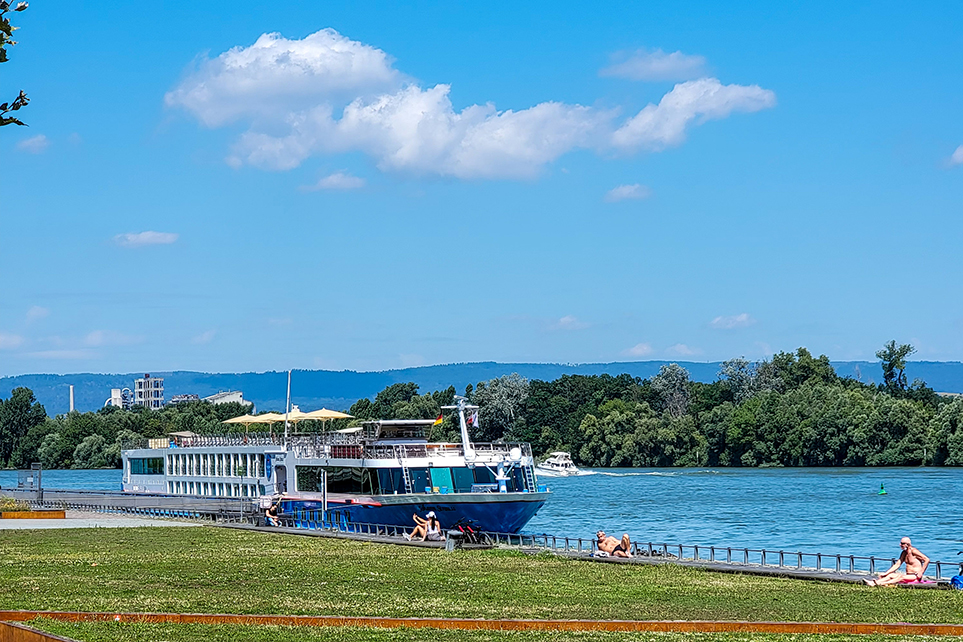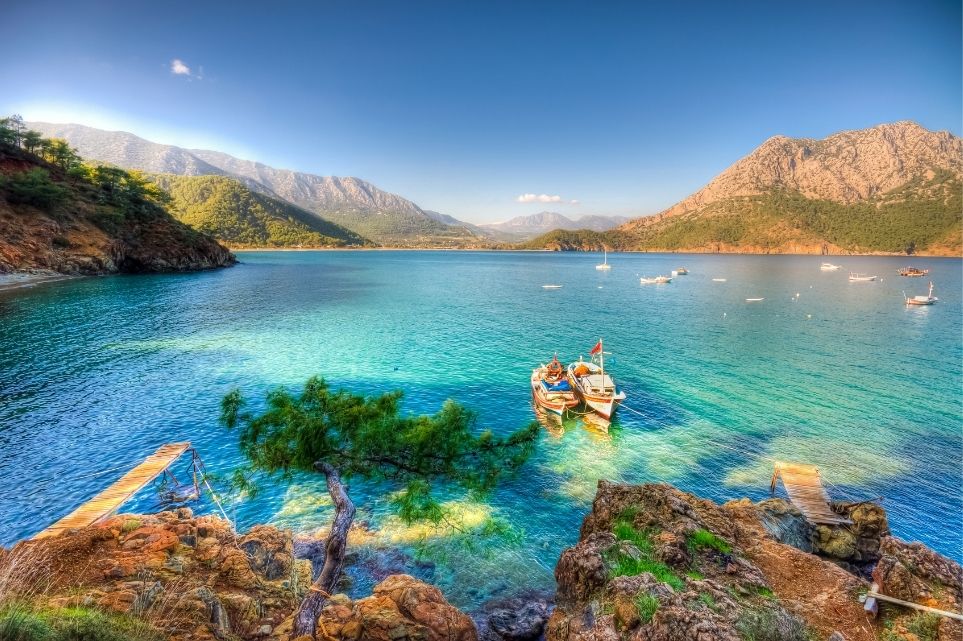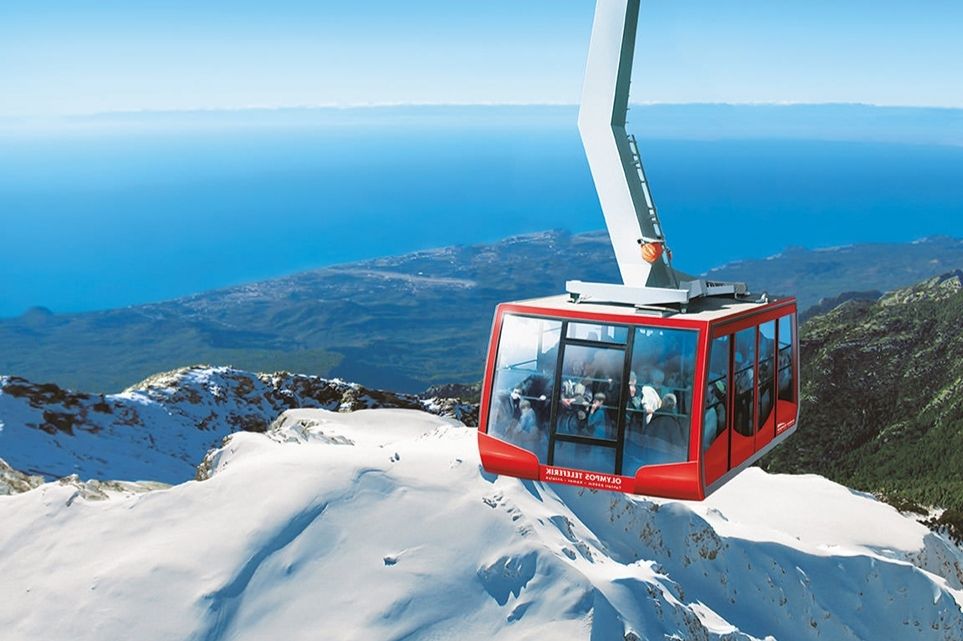
While visiting Frankfurt, we decided to take a day trip to Mainz, Germany. Not knowing what to expect of the city, we were shocked to discover that this region of Germany has a lot to offer.
Mainz is a wine lover’s paradise. Known as the wine capital of Germany, an overlooked scenic destination in Europe. Located in the southwest region of Germany, Mainz is one of the oldest cities in Europe and is the birthplace of Johannes Gutenberg, inventor of the printing press.
Positioned on the grand Rhine Riverbanks, Mainz is filled with cobblestone streets with hillsides sprinkled in castles and valleys of lush vineyards. In addition, you can trek, bicycle, or take a cruise, as the city offers an abundance of outdoor options.
Although Germany has countless hot destinations tourists seek, Mainz is often overlooked. Stunning churches with stained glass windows, museums filled with 13th-century artifacts, wine tasting at top-notch vineyards, and the spectacular Rhine River will take you on a lovely journey you will never forget.
Let’s have a look at the best things to do in Mainz:
SIGHTSEEING
The Rhine Promenade
The Rhine River is the key element of the city’s geography. Running from the customs port to the old city center, the Rhine Promenade, also known as Adenauer Ufer, is a great place to get in walking steps or appreciate the view.
Rheinstrand, a city beach area, perfect to fancy a drink or meal while visiting the city. As you walk toward the Neustadt (new city), beer gardens are dotted along the path to relish a tasty beer as you look out onto the Rhine River.
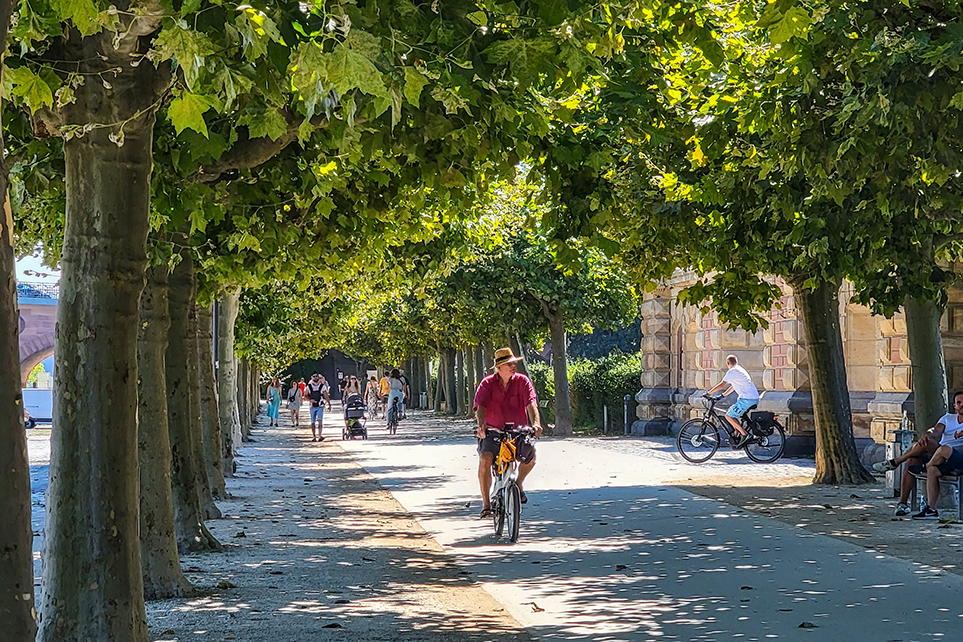
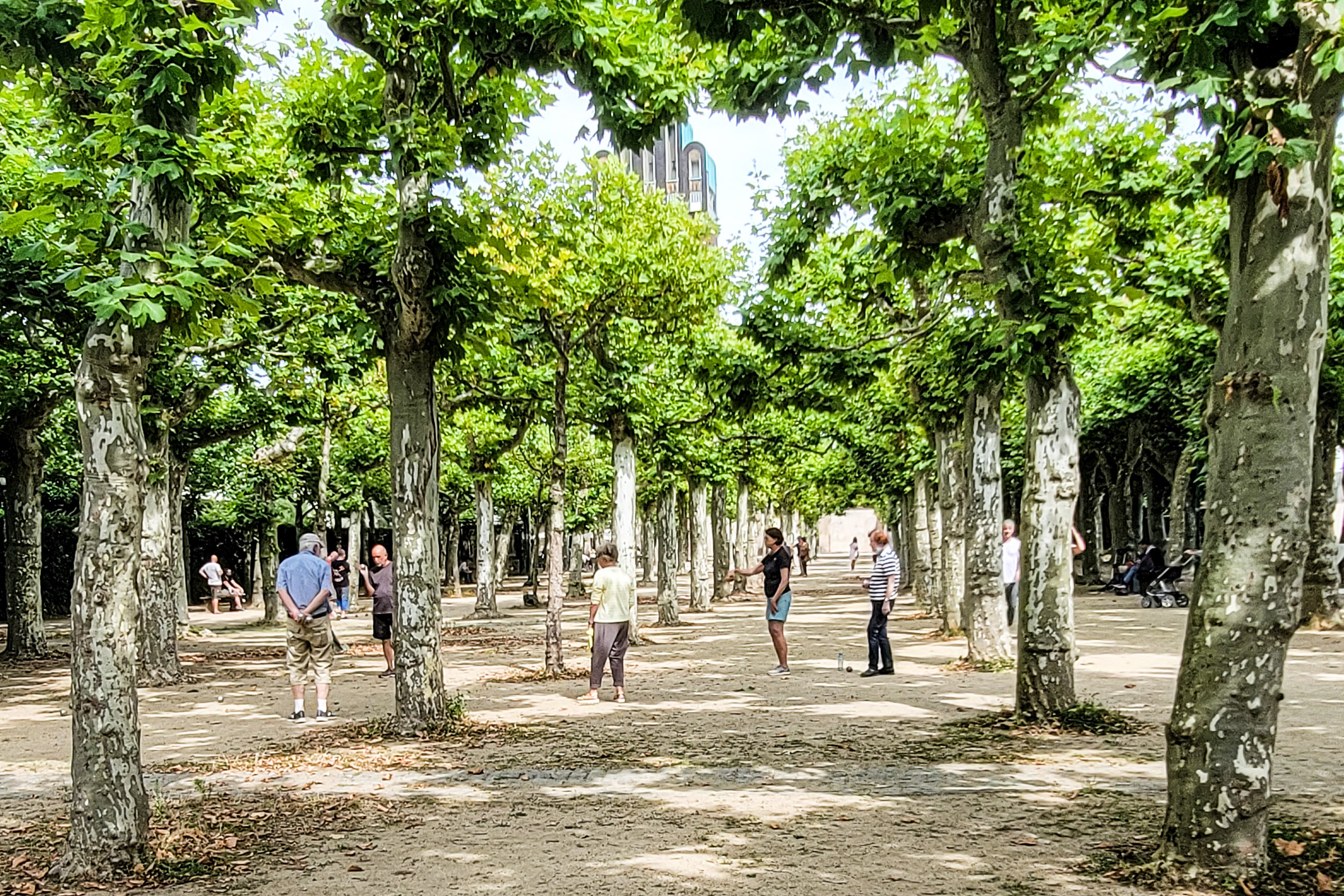

Electoral Palace (Kurfürstliche Schloss)
As you walk along the Rhine River towards the city center, you will notice the striking sandstone-red Electoral Palace. The Renaissance façade building is the former city residence of the Archbishop of Mainz.
The castle had a turbulent history starting in the early 16th century when the Elector of Mainz was expelled, and the castle was looted, leaving little remains behind. Later, the electoral state was dissolved, and the castle served as a barracks for the military. Then in 1872, the palace was turned over to the City of Mainz restored with funds from the State of Hesse. Next came WWII, causing mass destruction to the interior, leaving behind only the frame of the building. After many years of restoration, today, the building is used as an event center.
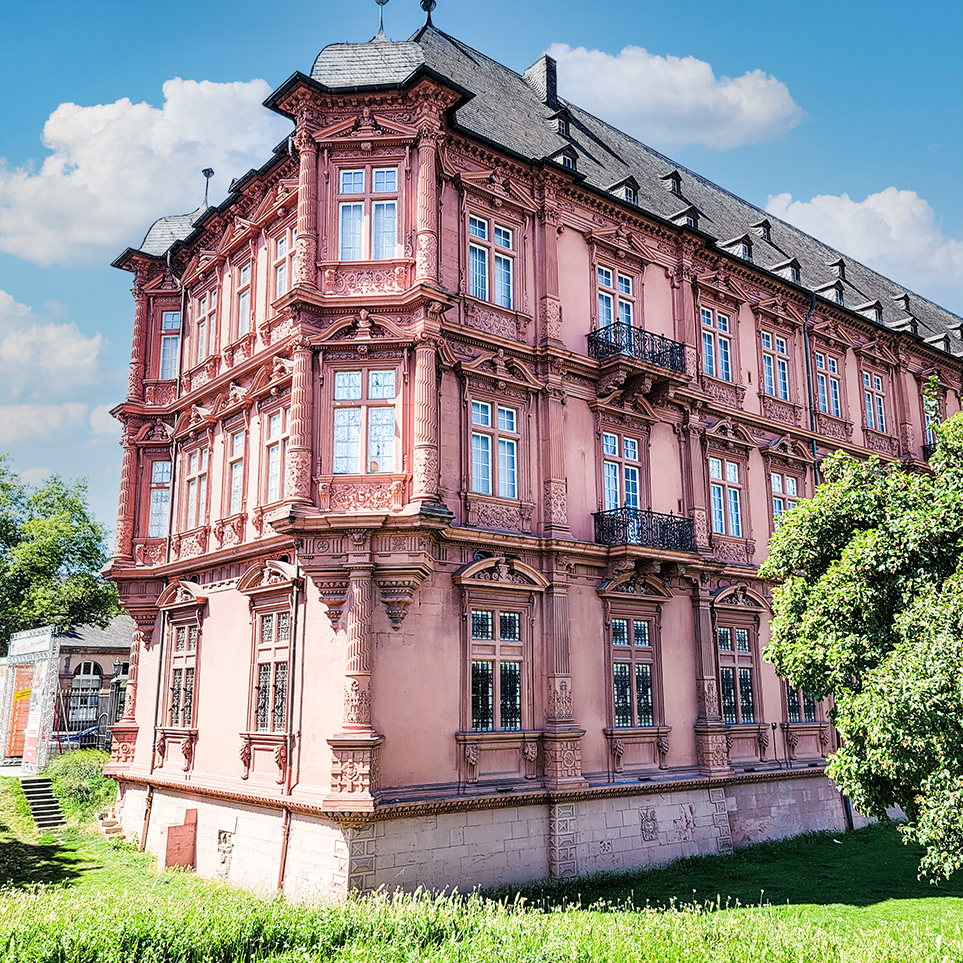
Shop at the Market
The lively Market of Mainz occurs at the big square in the middle of the city. Trading in the market is done every Tuesday, Friday, and Saturday morning.
Farmers have been selling their produce at this location since the 10th century (around the time the Cathedral was built).
Donated in 1526 by the Elector of Brandenburg is the Marktbrunnen (Market Fountain). A gorgeous Renaissance fountain and a must-see while at the market.
Also, at the square is the Heunensäule, a column that was carved for the reconstruction of the Cathedral after it burned in 1009.
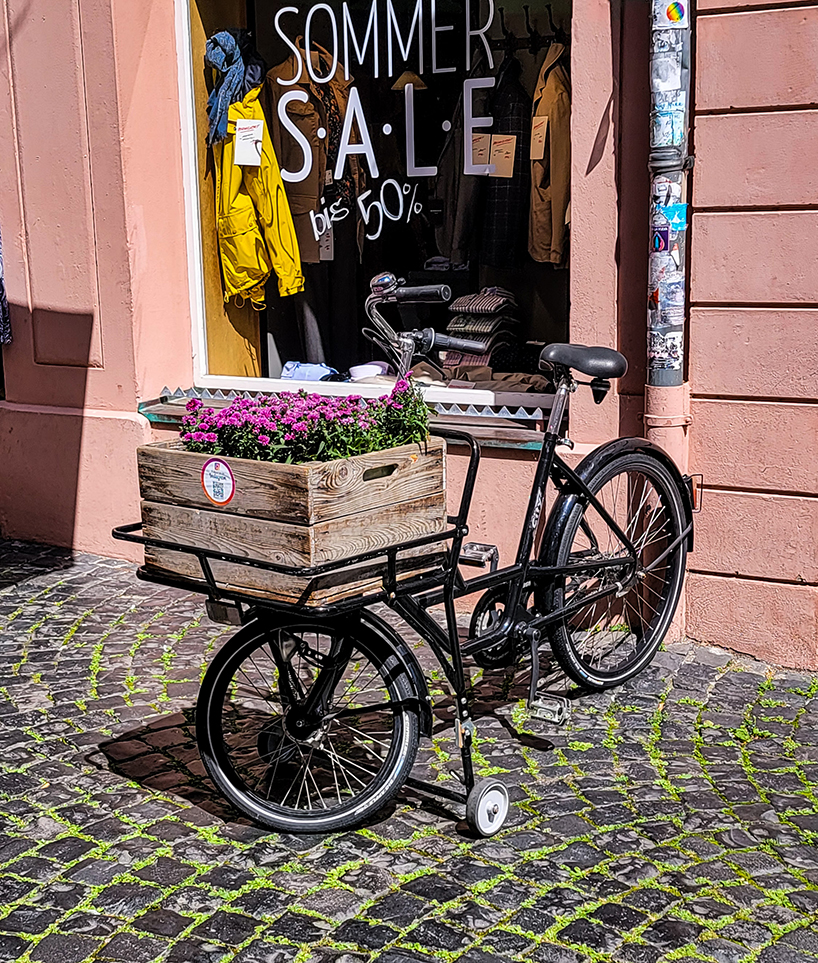
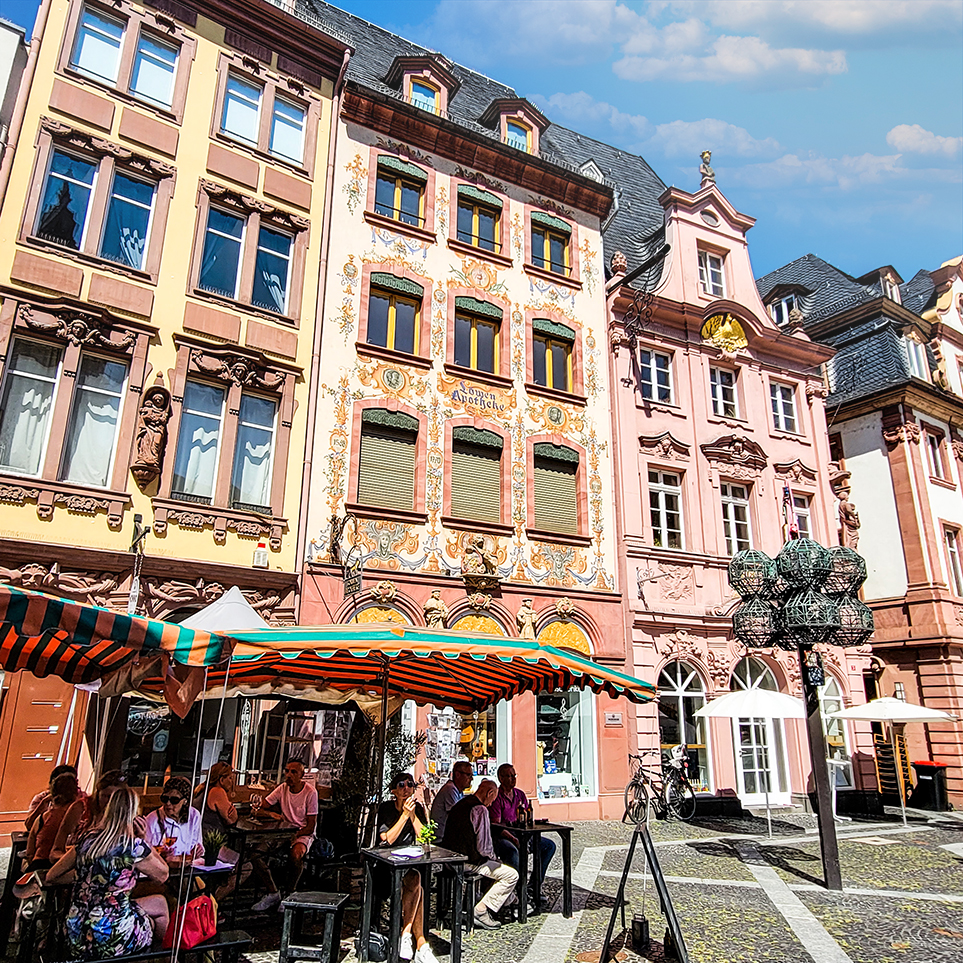
Walk through the Mainz Altstadt
Strolling through Mainz Altstadt is a lovely place to admire the architecture. Medieval cathedrals old patrician houses lay along the winding streets with picturesque squares, making it a charming place to visit.
Although this area was almost completely destroyed during WWII, the city rebuilt and restored much of the German-style designs and brought the old town back to life.
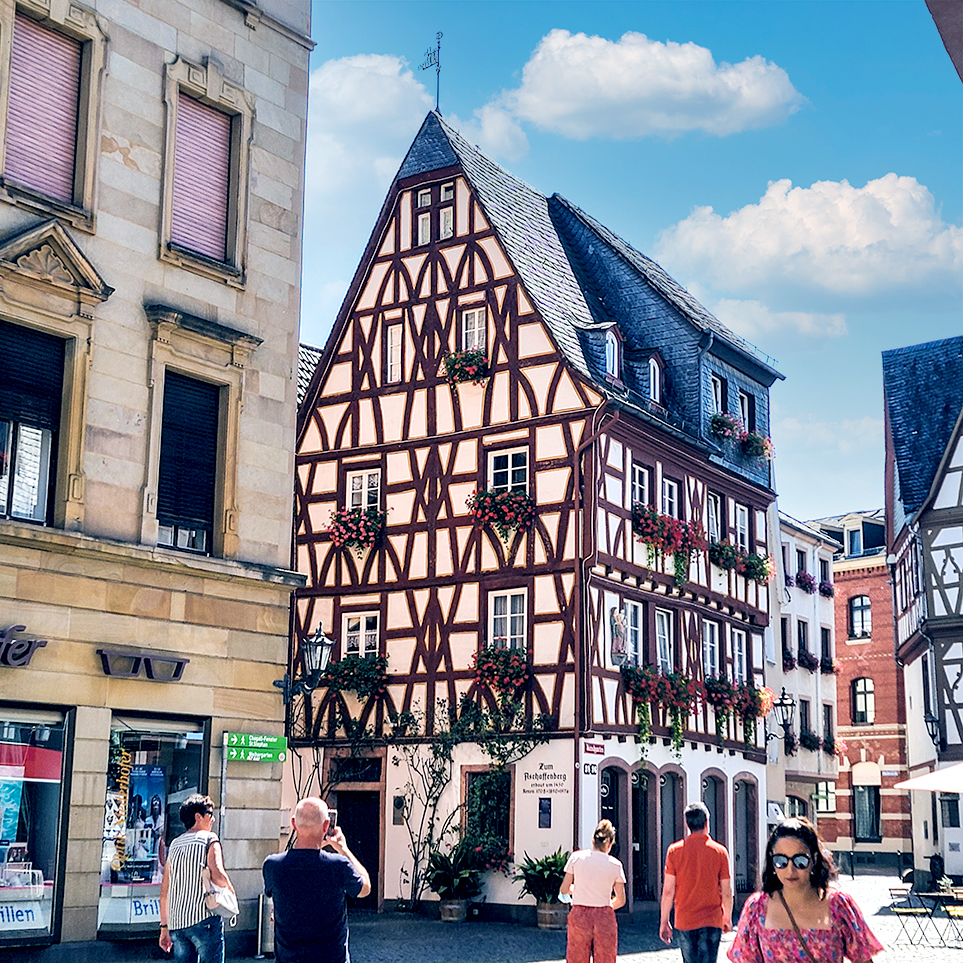
Kirschgarten
Looking for an Instagram photo spot, Kirschgarten is the place! This is another area where streets are aligned with half-timbered houses making you feel like you stepped into a fairytale.
Kirschgarten means cherry orchard, and it was said that cherry trees once existed in the square. At one of the half-timbered houses called Zum Beimburg, you will find the remains of a stump. Although the stump is not from a cherry tree, it claimed to give the square the name Kirschgarten.
The square dates back to 1329, while the houses are from the 16th – 18th centuries. One of the oldest preserved half-timber houses, Zum Aschaffenburg, is located here, built around the 1500s.
You will find many restaurants and shops to check out.
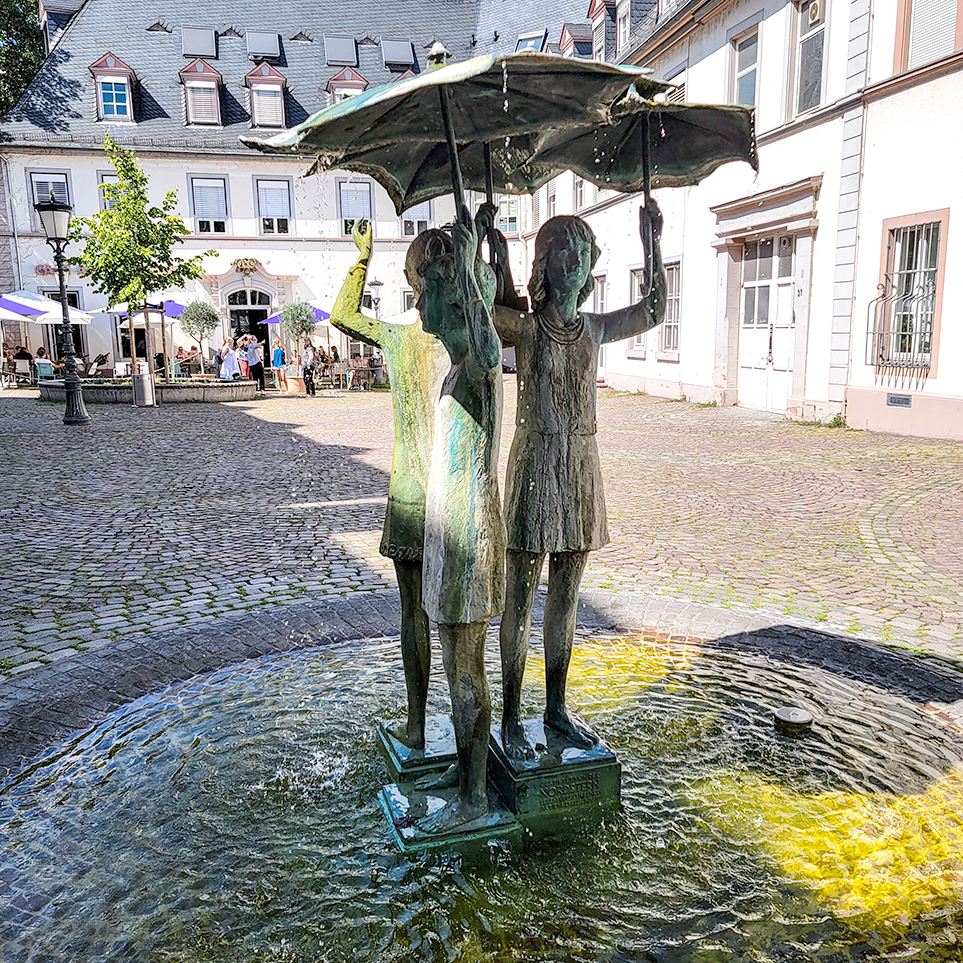
Ballplatz
It is located in a small square outside a school called Ballplatz, a bronze fountain called called Drei-Mädchen-Brunnen– meaning literally “Three Girls Fountain” in English.
Staatstheater
If you love the arts and are planning to stay for a lengthy visit, I suggest visiting the Mainz Staatstheater. Here you will find performances of opera, drama, and ballet.
The structure was built between 1829-1833, costing the city a pretty penny. Then, WWII came along and destroyed much of the theater. So over the years, restoration and renovation have been taking place to restore it to its original state.
- Check website for performances.
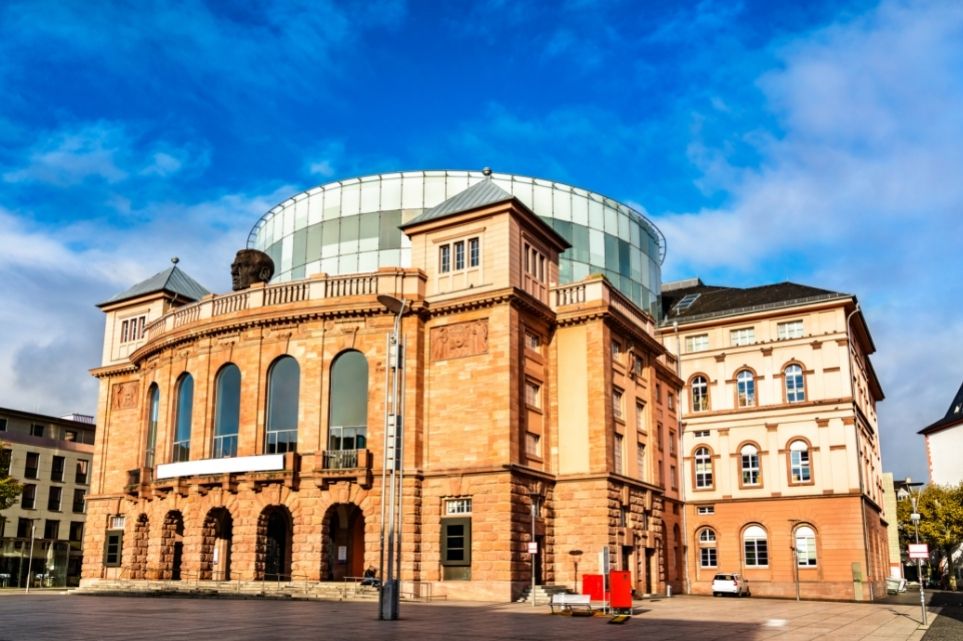
Schillerplatz
Schillerplatz is one of Mainz’s public squares, lined with an oasis of trees and regal palaces. This square has been a marketplace for the locals since the Middle Ages. A bronze statue dedicated to poet and playwright Friedrich Schiller can also be seen here.
Along the edge are Baroque and Rococo-style buildings and state government offices. The famous bronze Fastnachstbrunnen monument, standing nine-meters high, which commemorates the carnival celebration occurring on Shrove Monday, is also located here.
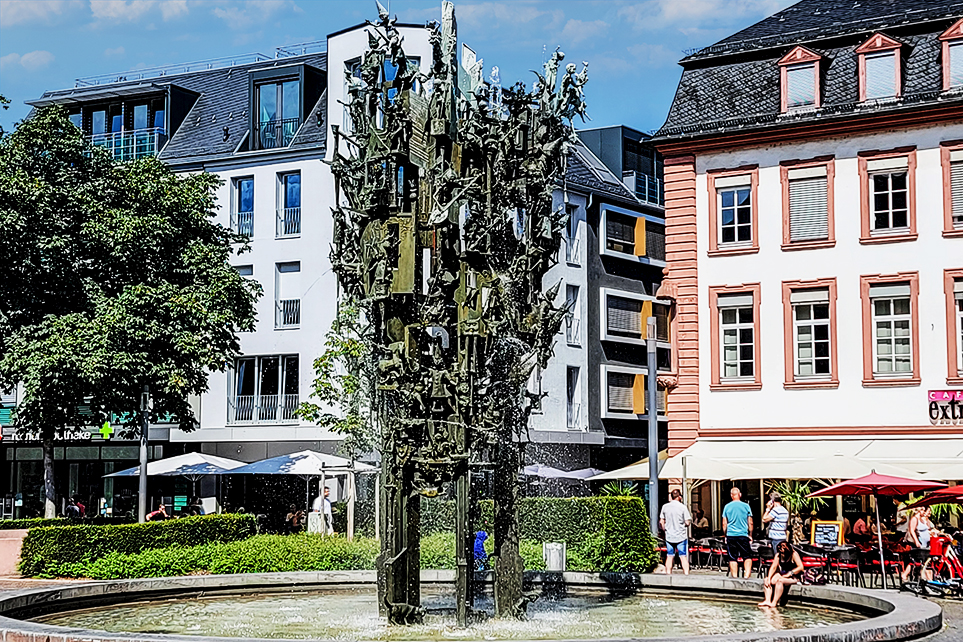
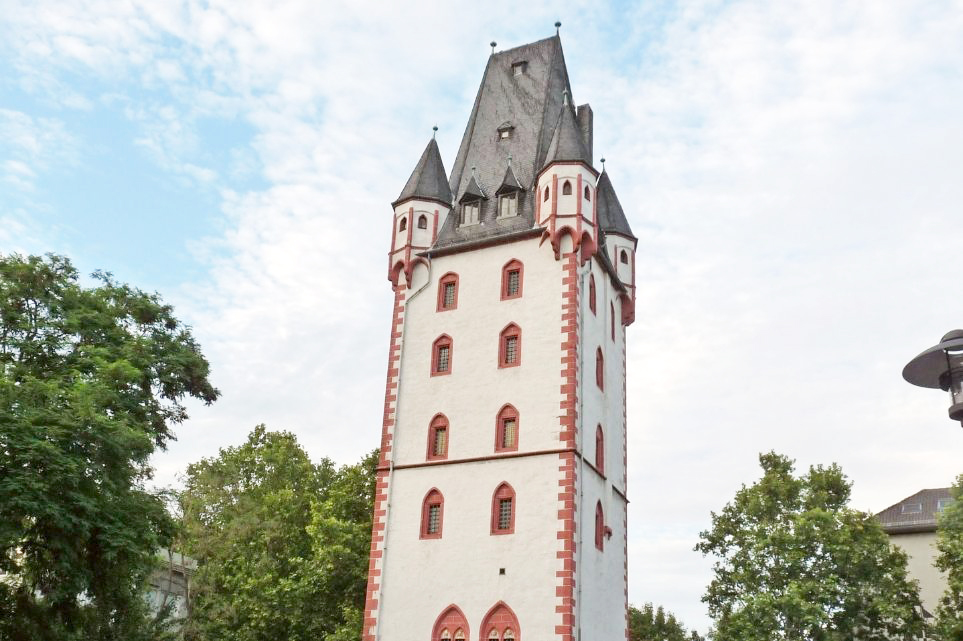
MUSEUMS
Museum Künstlerkolonie Darmstadt (Artists’ Colony Museum)
This museum gives you the inside story of Mathildenhöhe’s Art Nouveau exhibitions from 1899 to 1914. As you enter, a very catchy façade of a pair of sculptures representing man and woman. In addition, many decorative pieces such as furniture sets, sculptures, glassware, ceramics, textiles on display were produced in or near Darmstadt and set up by Ernst Ludwig.
Mainz State Museum (Landesmuseum Mainz)
Above the Baroque building is a ‘Golden Horse’ known as the Golden-Ross-Kaseme. Mainz State Museum provides visitors with a collection of art and artifacts from the prehistoric era to the 21st century. If you enjoy the arts, you will love visiting the museum.
- Hours: Tuesday 10:00 – 20:00, Wednesday – Sunday 10:00 – 17:00, Monday Closed.
- Admission: 6 EUR per adult. Guided tours are offered, starting at 40 EUR pp.
Gutenberg Museum
Johannes Gutenberg was a German inventor who introduced printing to Europe with his mechanical movable-type printing press.
Paying tribute to Gutenberg, the museum was founded in the early 1900s, sharing some of his first works that Gutenberg published. Another section of the museum is ‘World Museum for Art of Printing,’ filled with the history of printing from the 8th century and scripts printed in the Islamic World.
- Hours: Tue. – Sat. 9:00 – 17:00, Sun. 11:00 – 17:00, closed Monday
- Admission: 5 EUR per person, Guided tours are offered for an additional fee.
- If you want to plan a visit, check out the official website for the Gutenburg Museum here


Museum of Ancient Seafaring
The Museum of Ancient Seafaring is where you will see well-preserved Roman warships from the 4th century. In addition, the museum shares the history of shipbuilding and construction techniques.
The warships were discovered during the construction of the naval base in 1981. The area seemed to have been a part of the ancient harbor where the Romans abandoned old ships.
Within the museum is a workshop where visitors can watch staff put together antique pieces to create ship models.
- Hours: Tuesday – Sunday 10:00 – 19:00, Monday Closed
- Admission: Free
EXCURSIONS
Vineyards of Mainz
Germany’s largest wine region in Mainz is called Rheinhessen, producing top quality white wine, particularly Riesling, Müller-Thurgau, and Silvaner. Wine producers and chefs have embraced regional traditions and cuisine, serving local produce paired with impeccable wine.
You can find many tour options to experience delicious cuisine and savory wines. Visit this website to select the best option for you.

Rhine River Cruise
Although we did not have the time to take the Rhine River cruise, I suggest you add this to your list of things to do while visiting Mainz. Boat cruises from Mainz depart daily.
Castles are the highlight along the river’s edge. From Bingen to St. Goar are a slew of castles to see. You will be bouncing from side to side of the boat to snap pictures!
If you are short on time, you can get off along the way and return home by train.

CHURCHES
Mainz Cathedral
Romanesque from the High Middle Ages, with a mix of Gothic and Baroque design, is the creation of the stunning Mainz Cathedral. Located in the old town and founded by Archbishop Willigis in 975 and is the oldest monumental, vaulted building in Germany.
The church witnessed seven king coronations but also seven fires. This explains why you’d see various architectural styles throughout the Cathedral.
- Visit the second floor to see the cloister from the 15th century. The Episcopal Cathedral and Diocese Museum are located on-site, with a collection of sacral artworks.
- Museum: Hours Tue. – Thur. 13:00 -17:00, Fri. 10:00 – 17:00, Sat.-Sun. 11:00 -18:00
- Admission: 5 EURO

St. Peter’s Church
One of the most important rococo-style buildings in Mainz is St. Peter’s Church, completed in 1762. The bright pink color exterior makes for an eye-catching facade. Not far from the Mainz Cathedral, this ornate and colorful interior was created by the Bavarian painter Karl Manninger and his pupil Hermenegild Peiker.
The church suffered severe damage from the war and was fully restored over the past ten years. Unfortunately, the only surviving original fresco can be seen behind the entrance. Definitely worth a visit!
- Tip: Not far from St. Peter’s Church is the Natural History Museum.
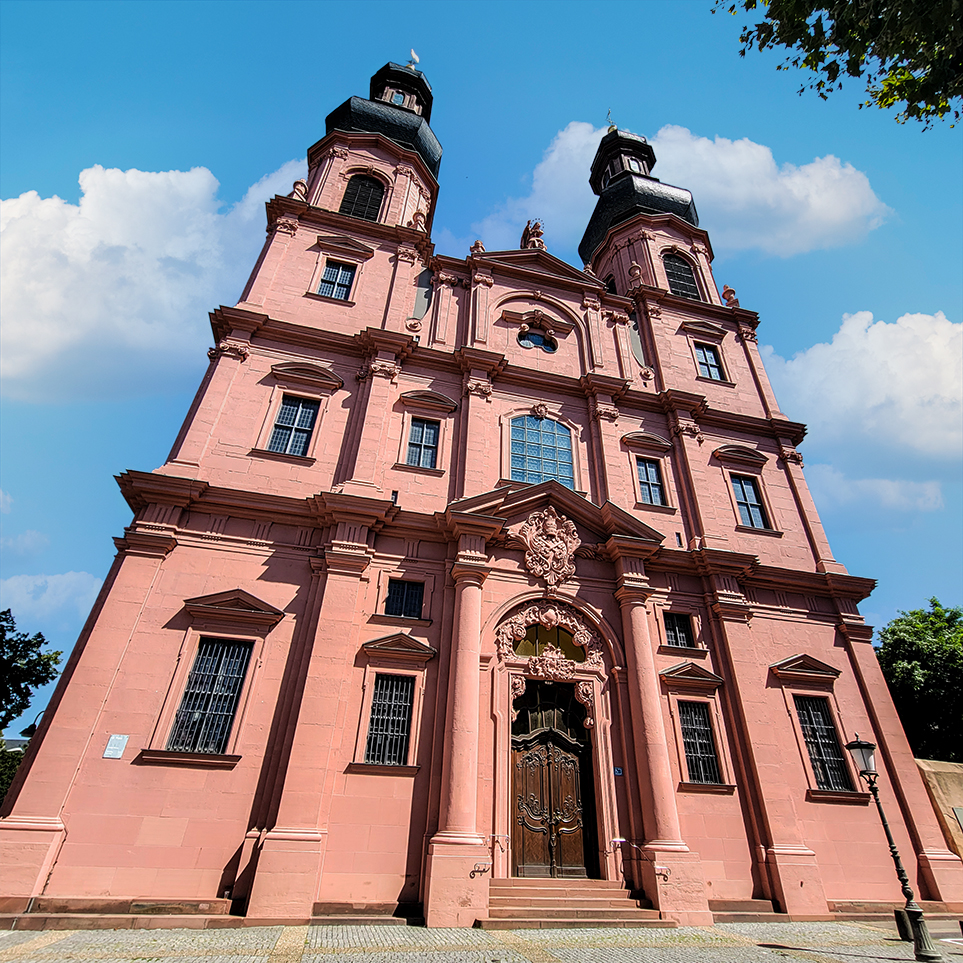
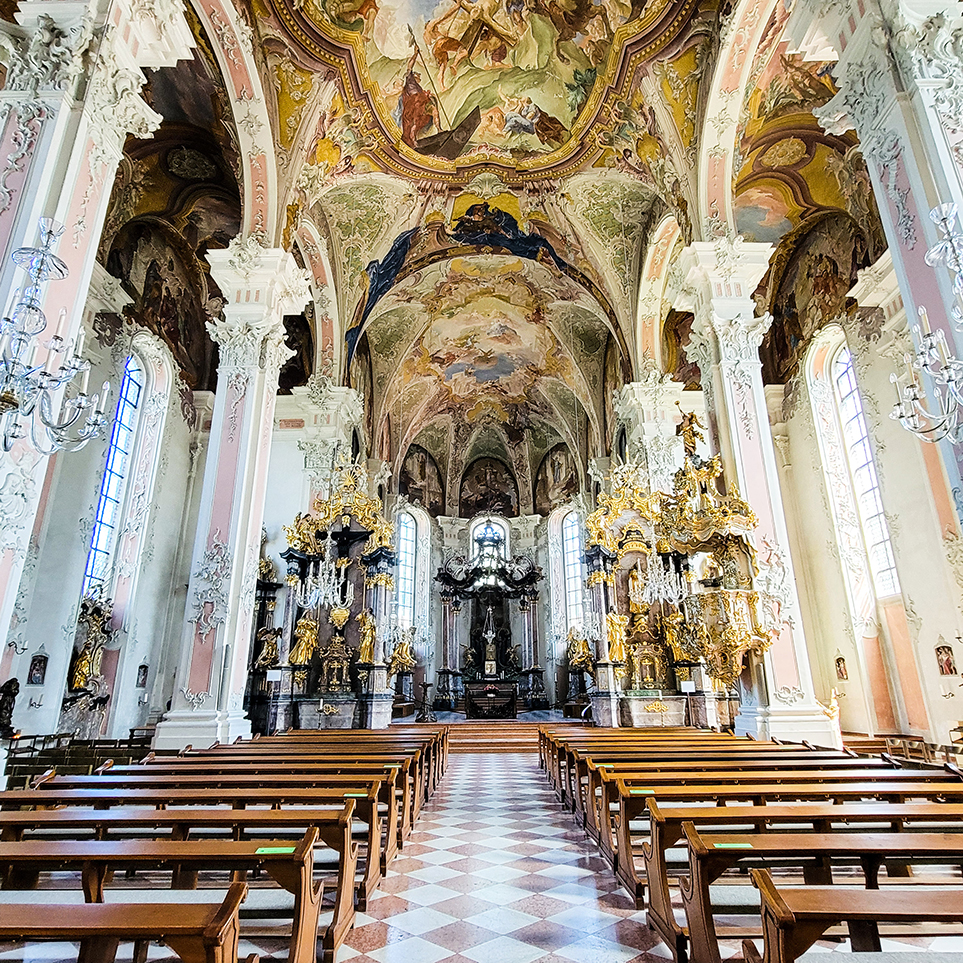
St. Stephen’s Church (Stephanskirche)
St. Stephen’s Church has been attracting over 200,000 visitors a year for its glowing blue stained-glass windows, which were almost completely destroyed during WWII. St. Stephen’s Church, designed in Gothic architectural style, was founded in 990.
The new Gothic building was erected between 1290 – 1335, standing on the basilica foundations built in the Ottonian period. Unfortunately, in 1857 an explosion destroyed the Baroque façade and was not restored until 1970.
Marc Chagall designed blue tone windows in the choir between 1978 – 1985, unique and special to Germany.
Take a walk in the beautiful Rhineland-Palatinate. Tombstones, coats of arms of the capitular families, as well as works of art from the 15th century can be seen.
- Hours: Nov. – Feb. Monday -Saturday 10:00 – 16:30, Sunday 12:00 – 16:30; Mar. – Oct. Monday – Saturday 10:00 – 17:00, Sunday 12:00 – 17:00
- Admission: Free to enter, but guided tours are provided (+49 6131 231640) or email: pfarrbuero@st-stephan-mainz.de
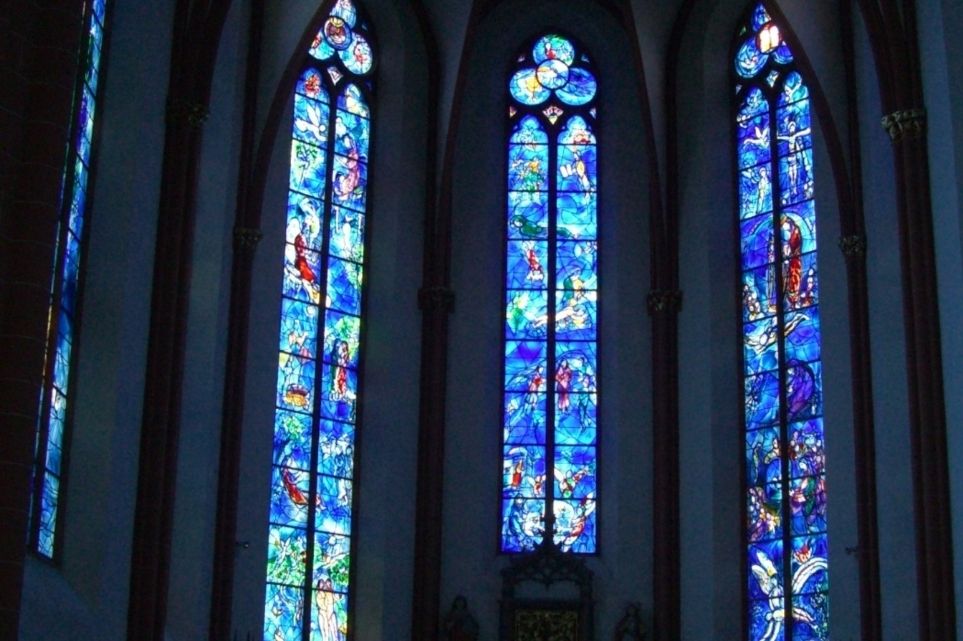
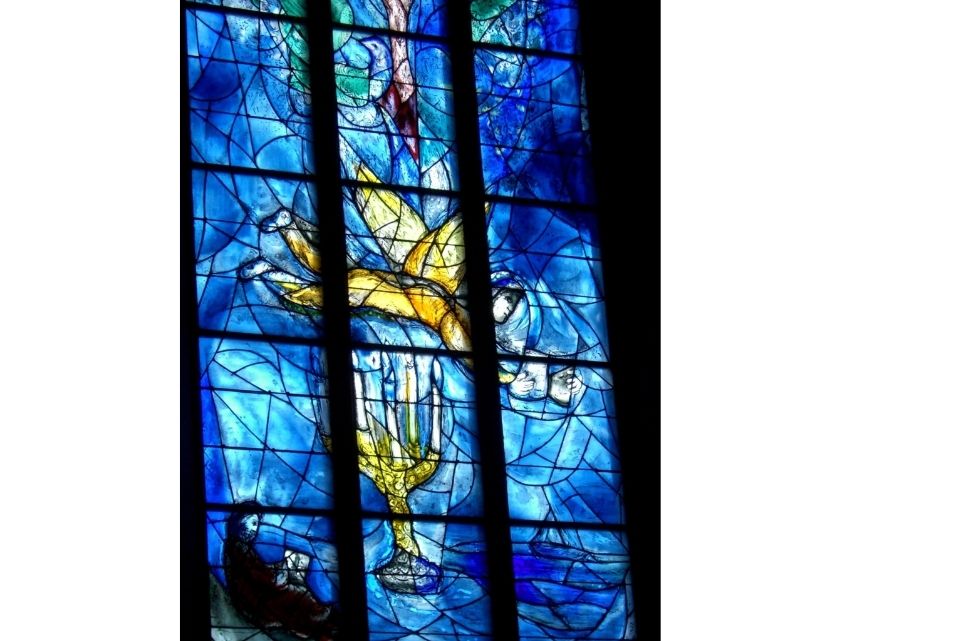
Christ Church in Mainz (Evangelische Chrisuskirchengemeinde)
The first Protestant Church in Mainz, Christ Church, was built between 1897-1903. By the 1900s, more than 30,000 people living in Mainz were Protestants. In 1945, the church was destroyed but later rebuilt and somewhat redesigned.
Today, the church offers worship services and serves as a venue for weddings and special events.
- Hours: Tue., Thu., Fri. 10:00 – 12:00, Wed. 17:00 – 19:00
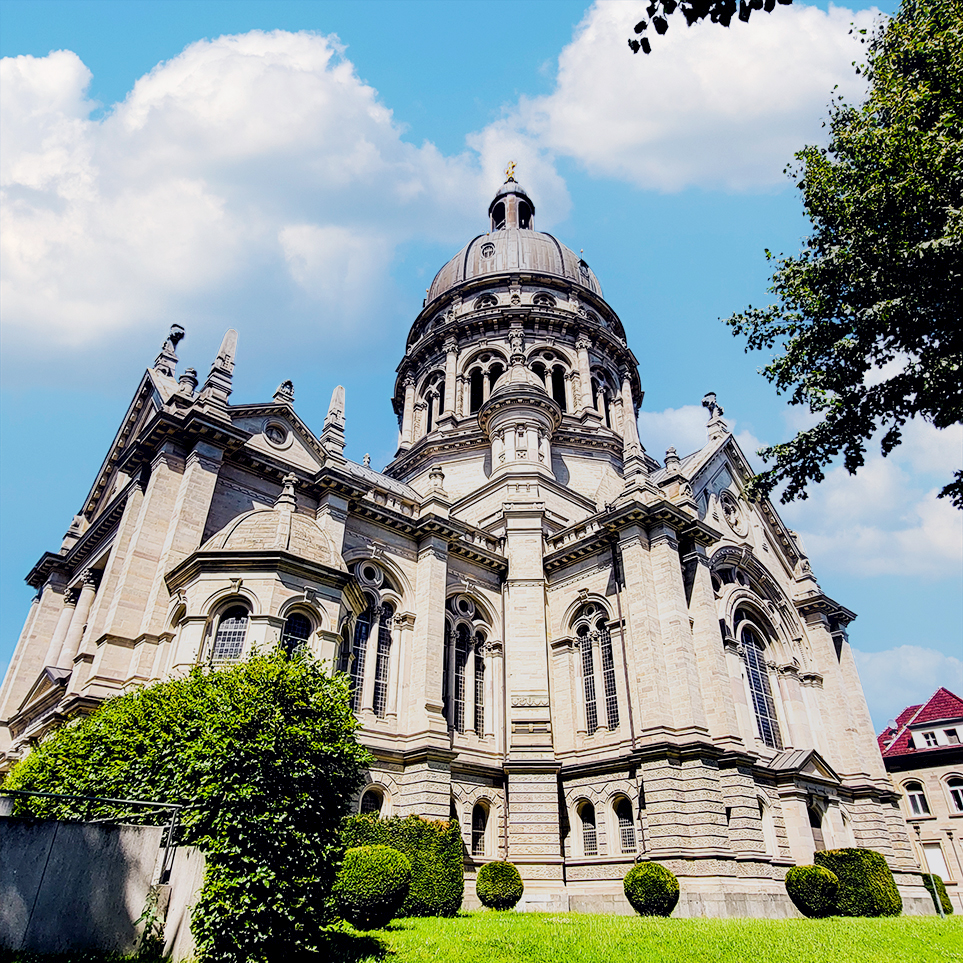
St. Emmeran Church
Saint Emmeran Catholic Church was founded in the 8th century. Over the years, modifications to the infrastructure were made to the church. Today, the church houses the Italian parish of St. Emmeran.
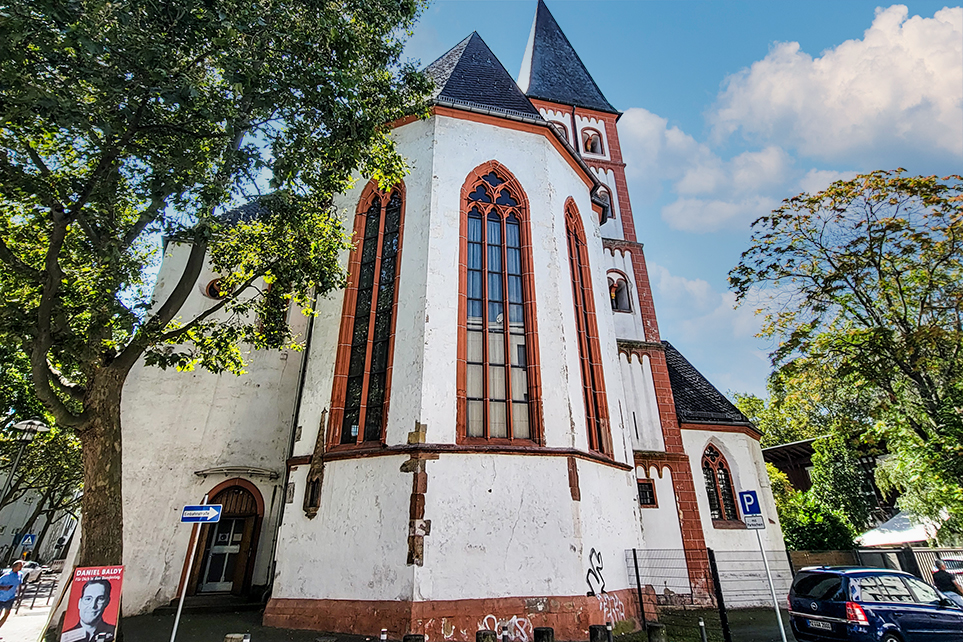
St. Augustin Church (Augustinerkirche)
St. Augustin Church was built between 1768-1771 by Austinian hermits and once was the minister of the Augustine friars. Unaffected by WWII, the Baroque masterpiece has some ornate sculptures depicting the coronation of Mary between Augustine of Hippo and mother Monica of Hippo.
Following the secularization of the monastery in 1803, the building became a seminary school. Stroll through the monastery complex and see the beautiful figurines created by Nikolas Binterim.
Rococo decorations fill the interior of the church with elaborate frescoes. Look up and see the baroque pipe organ created by the Stumm family in 1773. The church is located here.
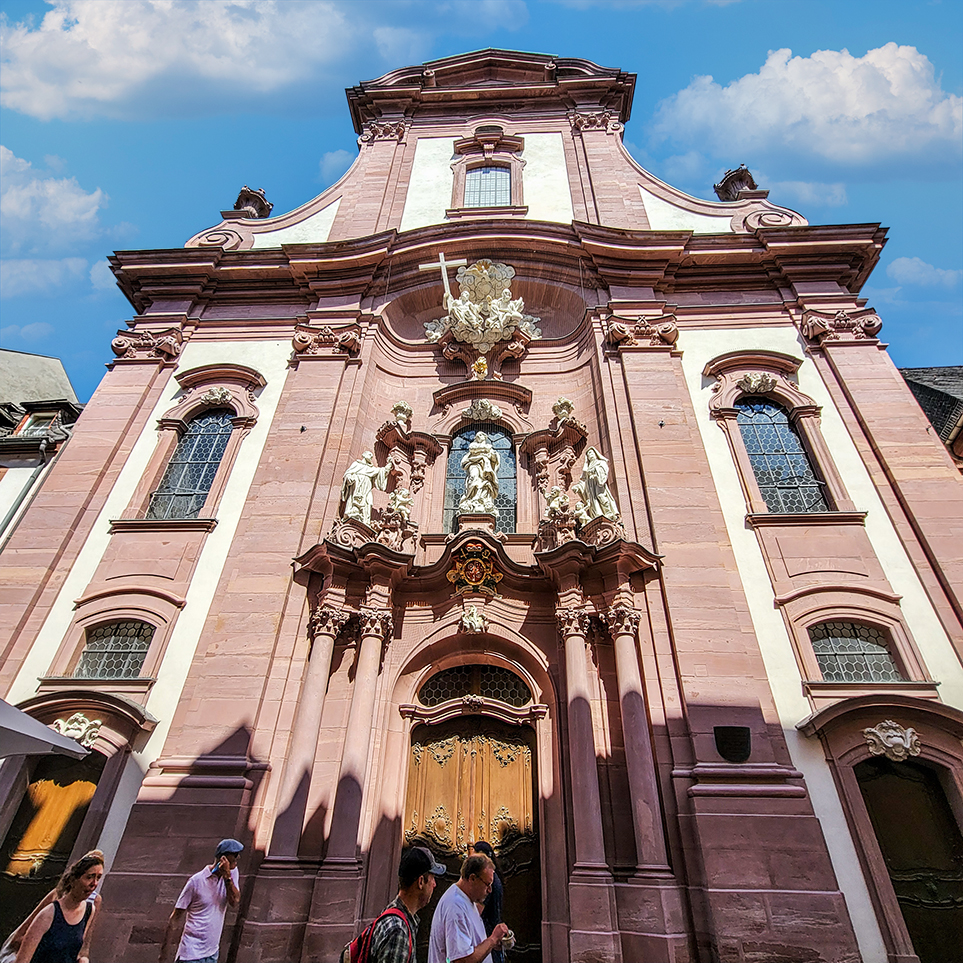
Make sure to include Mainz in your plans when visiting Germany. I guarantee you won’t be disappointed!
Enjoy your travels! Please read my blogs about other exciting places around the world at Traveling Lens Photography.
If you want to read more follow me on Facebook, Instagram, or Pinterest as I share my journey.
Happy Travels!




